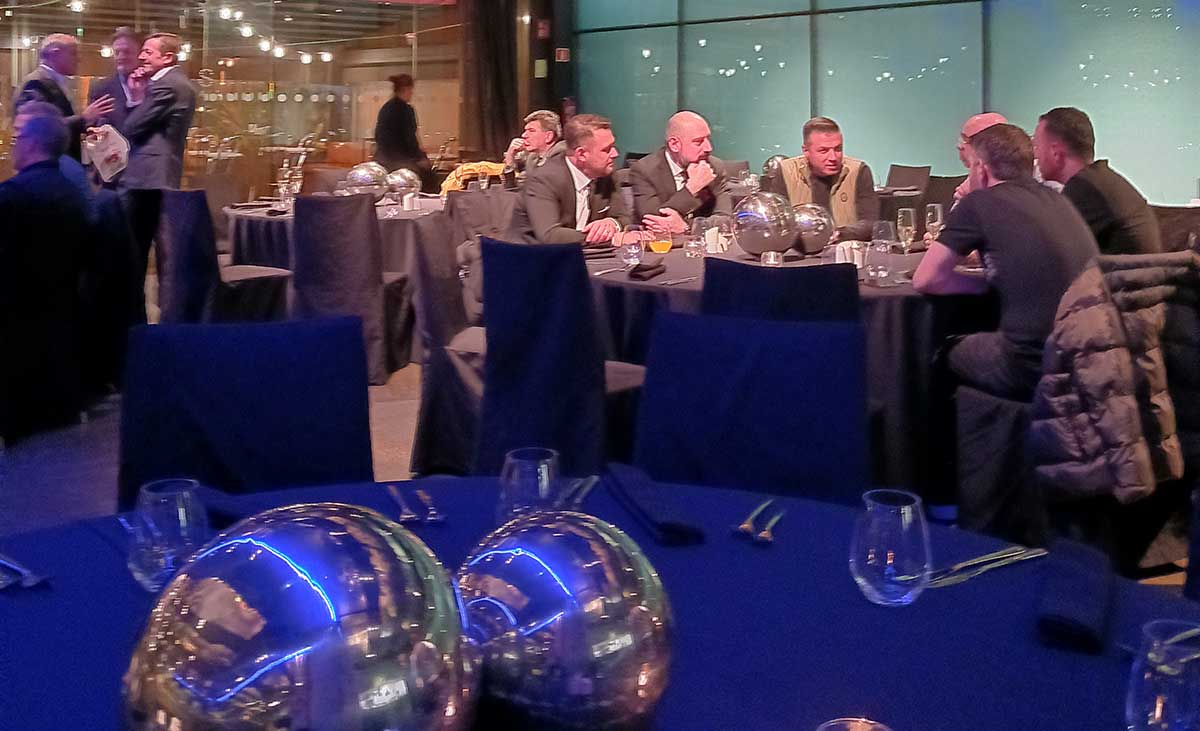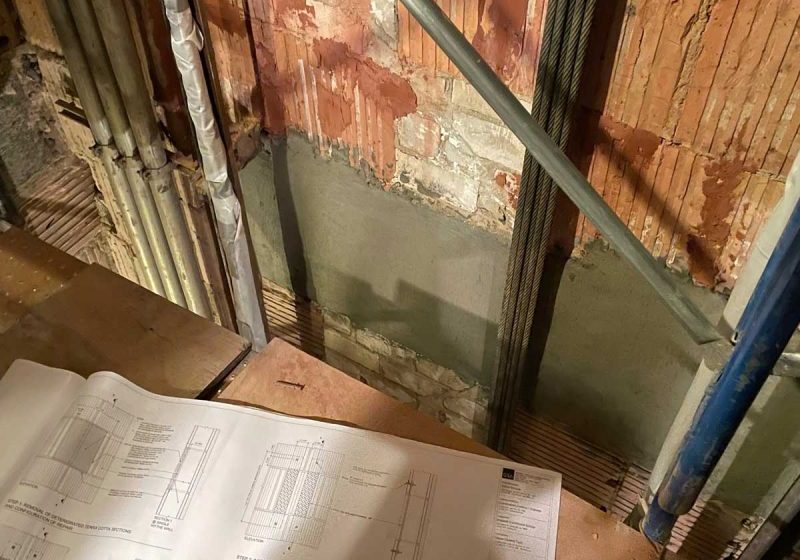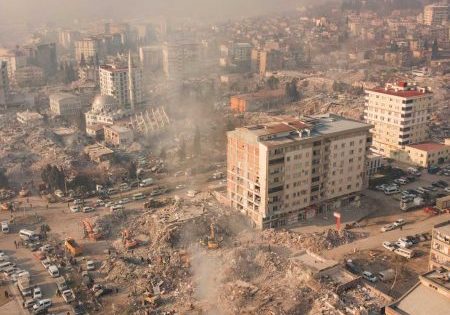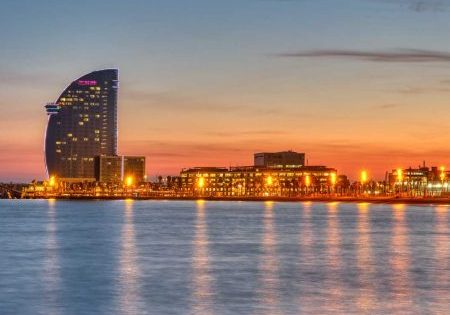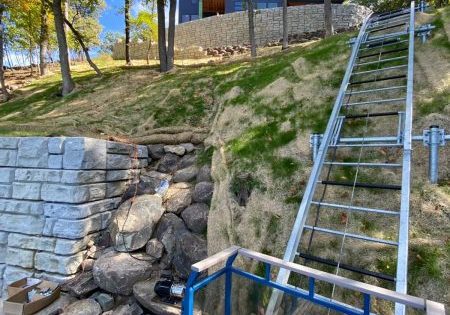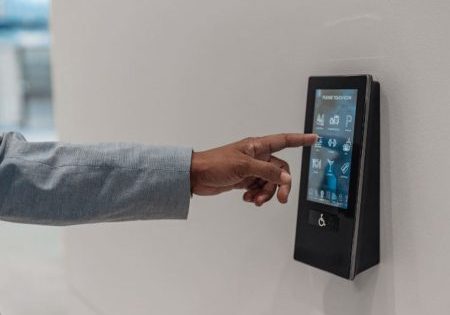VT experts gather at IEES 2022 in Barcelona to explore “The Future of Vertical Transportation in 2030.”
In welcoming attendees to the International Elevator and Escalator Symposium (IEES), Liftinstituut BV Managing Director (MD) Marco Waagmeester observed the Greek definition of “symposium” is to “drink together.” In ancient Greece, male citizens would gather at symposia for not only drinking, but dinner, conversation, music and entertainment. They would recite poetry and watch professional musicians and dancers.[1] Conceived and organized by Liftinstituut and ELEVATOR WORLD, the vertical-transportation (VT) industry’s annual symposium, IEES, shares some characteristics with those of the ancient Greeks. Drinks, dinner, conversation and music are enjoyed. But, IEES also welcomes women (both attendees and presenters), and has, at its heart, networking and dense (but never boring) presentations of technical papers.
Each year, organizers select a unique and dazzling city and venue to host IEES, and 2022 was no exception. Under the theme “The Future of Vertical Transportation in 2030,” the sail-shaped W Barcelona, designed by world-renowned architect Ricardo Bofill and overlooking the Mediterranean Sea in Barcelona, Spain, played host. Presented in the W’s large ballroom overlooking the beach through floor-to-ceiling windows, papers explored how the VT industry and world cities will, and should, evolve. Expert presenters hailed from Argentina, Finland, France, India, Israel, The Netherlands, Spain, Switzerland, Türkiye and the U.S. EW President T. Bruce MacKinnon and MD Bülent Yılmaz were a constant presence throughout, helping move the schedule along, drumming up interest for this year’s IEES in Edinburgh, Scotland, and networking. Two days of presentations were capped off by a panel discussion on the future of VT. A small, intimate tradeshow with 11 exhibitors was set up toward the back of the expansive ballroom.
Served by a Mitsubishi Electric elevator system, the W is in the Barceloneta neighborhood, which is within a short cab ride from many iconic attractions such as Antoni Gaudí-designed landmarks including the Sagrada Família church. Many attendees took an extra few days to take in these amazing sights and absorb local culture. Daniel Swett and Sheila Swett, International Association of Elevator Consultants (IAEC) Central Region officer and executive director, respectively, for example, not only visited the cathedral and other Gaudí structures, but took in a paella cooking class.
Day 1 (December 12)
A wide range of accents from around the world could be heard as guests networked in the tradeshow/coffee area after checking in. Liftinstituut Head of Marketing Marjon Oosting made sure the schedule was adhered to by gently urging everyone to take their seats so the first presenter — Lucien Wedzikowski, senior director, High-Rise Elevators, Otis France — could take the stage. Wedzikowski presented “Elevators 2030 — A Global View,” based on a paper by renowned consultant Louis Bialy, who was unable to attend.
Wedzikowski began by observing that it’s interesting to look at “not just what the elevator industry will look like in 30 years, but in the next several years.” The COVID-19 pandemic, he observed, “changed everything,” and the VT industry rose to the challenge. The pandemic reinforced several notions, he said, including that the world will continue to need VT and that people are social creatures who need each other — a fact emphasized throughout Bialy’s paper. “During the pandemic, we changed to remote education, and how did that work out?” he asked, referring to the general failure of a remote-only education system.
The pandemic failed to kill retail, Wedzikowski said. Although COVID-19 prompted a spike in online purchasing, brick-and-mortar stores are alive and well, particularly in city centers, he said. “It’s still 60-40% in-person versus online shopping,” he stated. “We still want malls and shops, with a focus on customer service.”
One way the VT industry has been proactive is regarding energy-efficiency, Wedzikowski said. “Climate change will have profound, worldwide consequences,” and the VT industry realizes this. The European Union’s Green City Accord for greener, healthier cities indicates energy efficiency of buildings (including elevators) will be enforced in the future, he said. Other trends he sees gaining momentum in the next several decades include augmented reality, an increased focus on cybersecurity and remote interaction powered by the Internet of Things (IoT). He said:
“For elevators, remote interaction can help handle entrapped passengers. It enables an expert to be ‘anywhere’ 24/7 and facilitates fast intervention and user interaction. Again, thanks in part to COVID, we have a much more seamless (elevator) user experience with people able to operate units using their smartphones or smart watches. The passenger experience has been enhanced with video and better security.”
Wedzikowski then pulled back to provide a macro view of global smart cities and how they might evolve. Touching back on Bialy’s theme that people are social creatures, he described the proposed U.S. utopian city of Telosa that envisions equal access to health care, education and housing regardless of income.[2] While this dream may be far-fetched, other trends — namely that of supertall, mixed-use towers in North Africa and the Middle East — continue. “It’s dramatic how [skylines] have changed,” Wedzikowski said.
The 163-story, 828-m-plus tall Burj Khalifa in Dubai is still the world’s tallest building, but there are other contenders. A 1,000-m-tall building has been proposed as part of the New Administrative Capital of Egypt. A 2-km-high building is envisioned in Riyadh, Saudi Arabia. Should these ever-taller buildings materialize, we need to keep in mind that humans “need to connect, to socialize,” Wedzikowski concluded. “The elevator industry will need to adapt to changing paradigms, but we will be up to the task.”
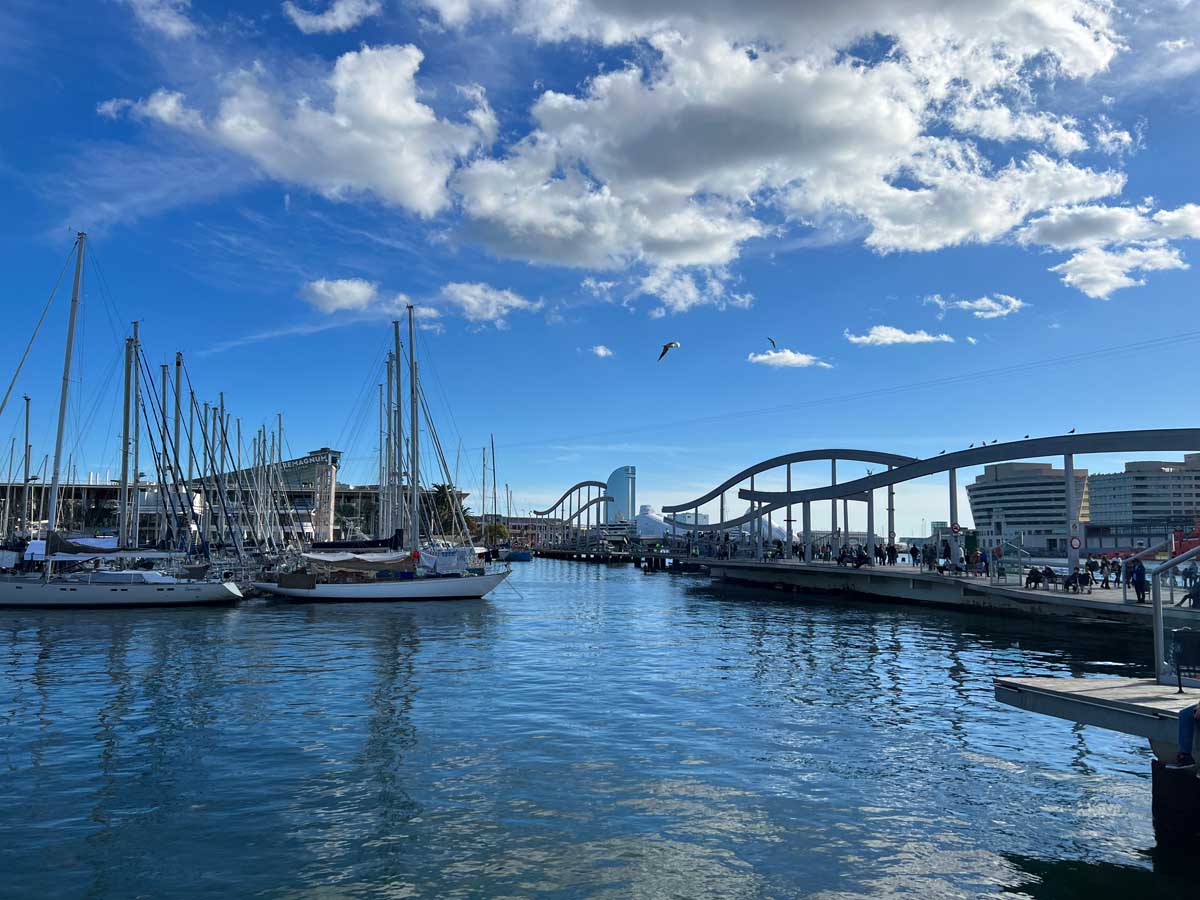
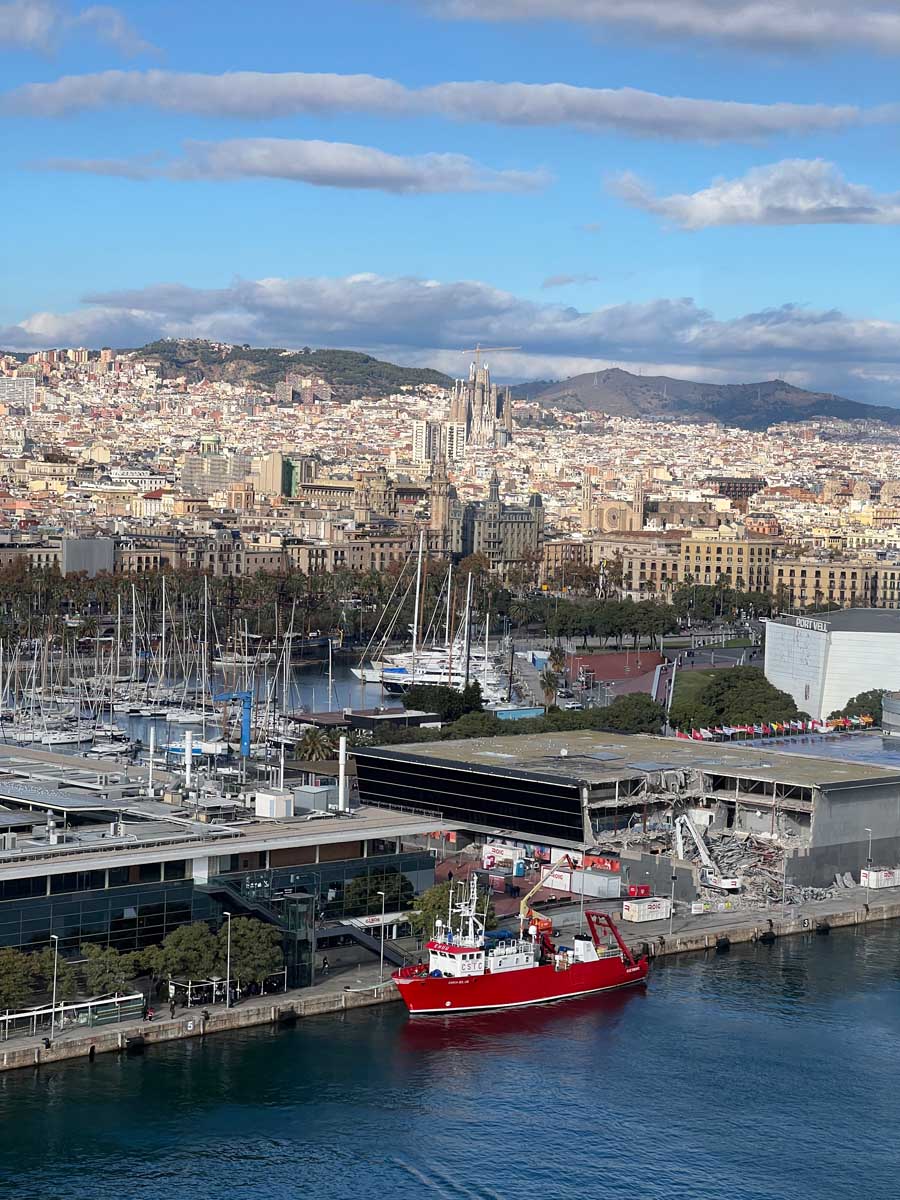

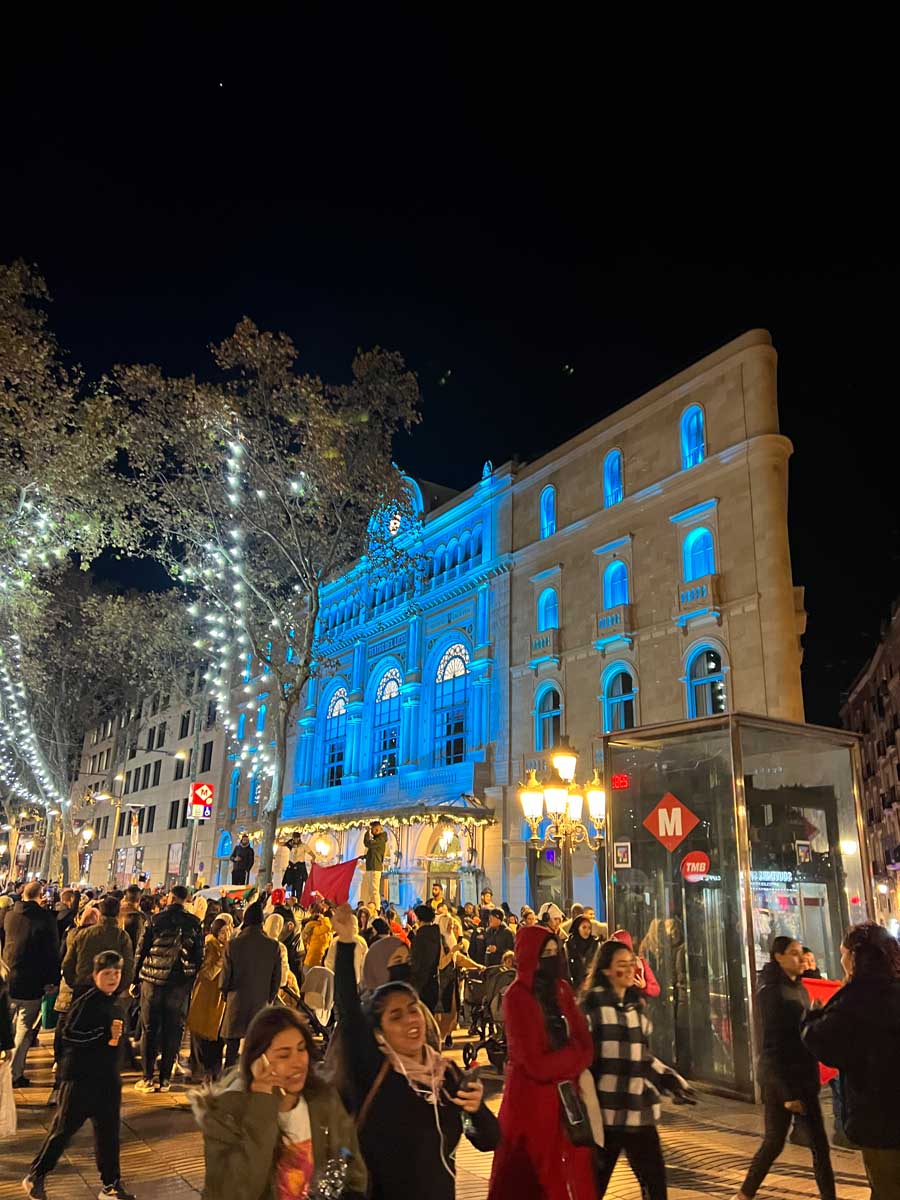
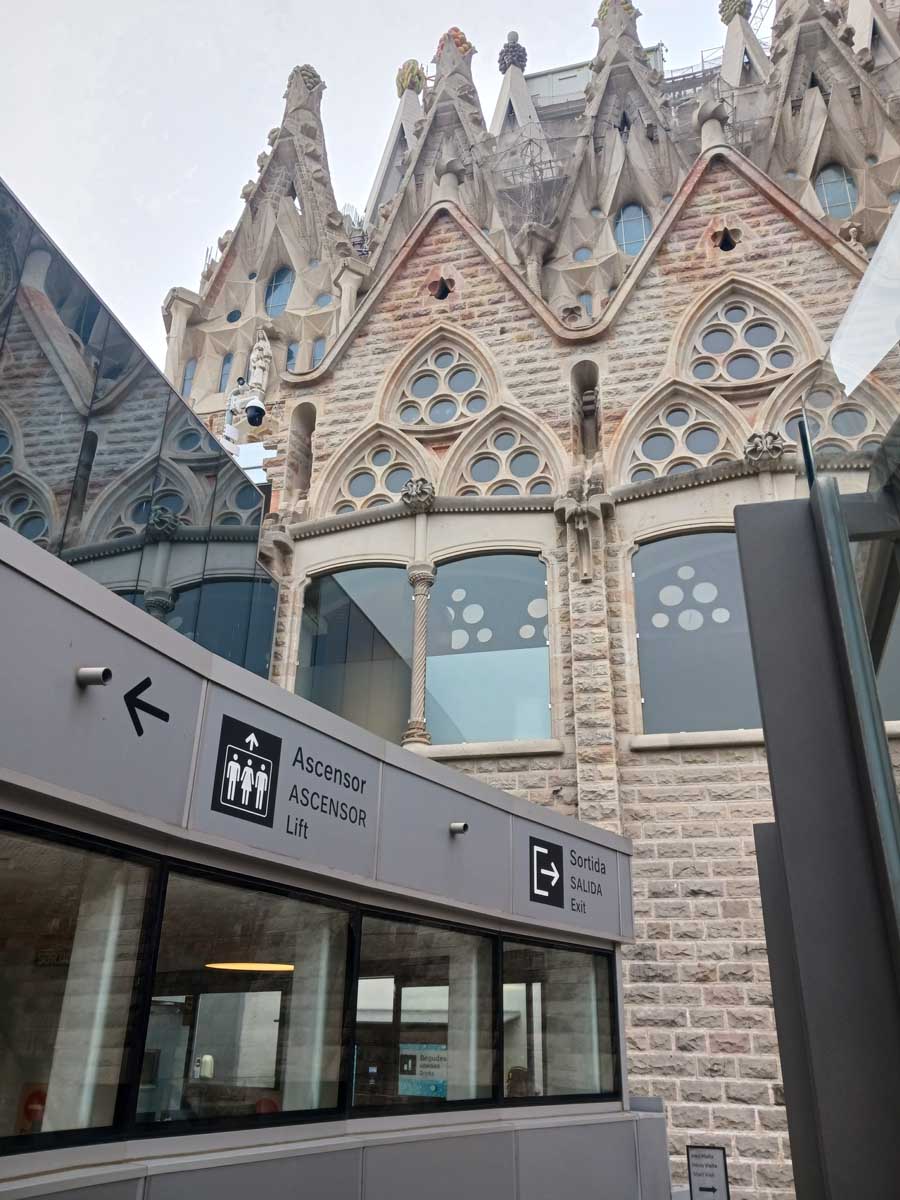
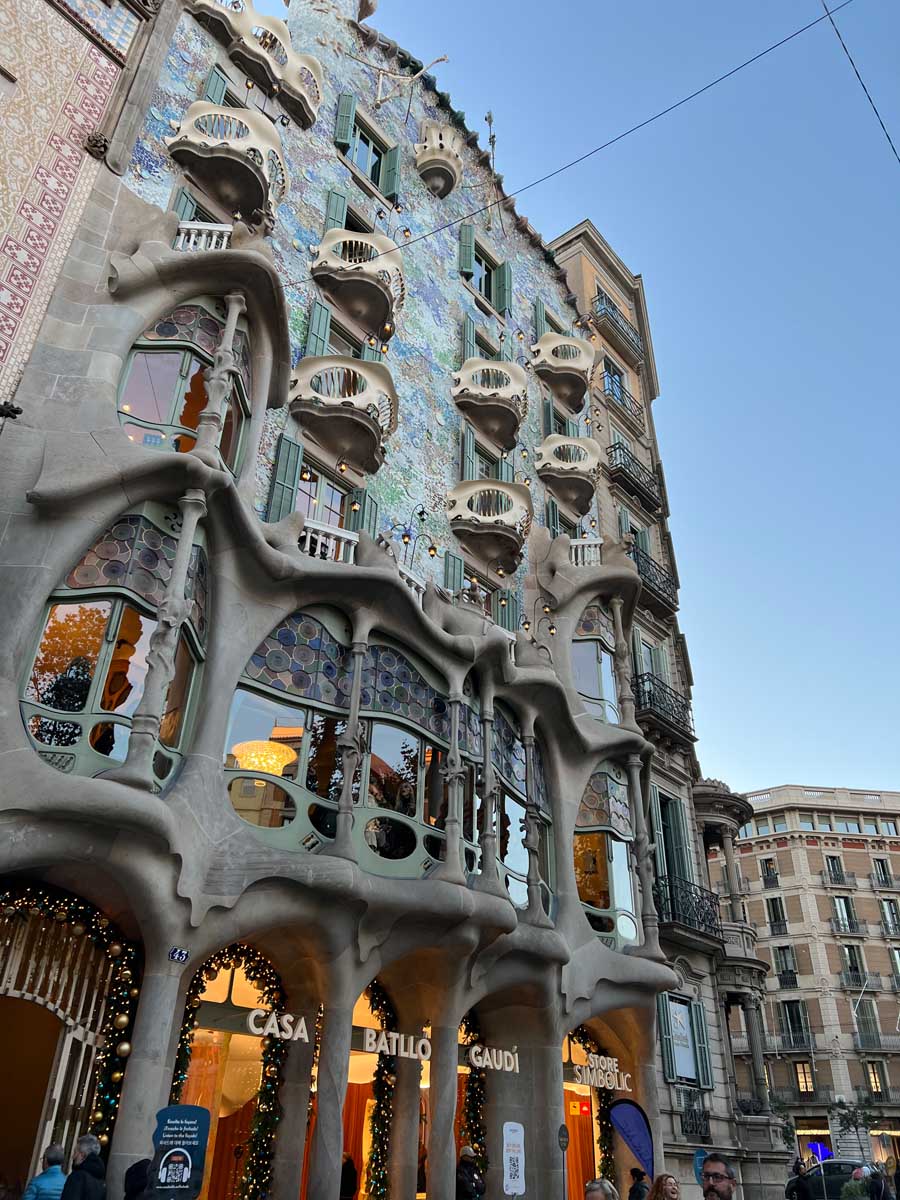
Next up was John Koshak of IAEC and eMCP LLC, who took the place of Credit Suisse research analyst Andre Kukhnin, who was snowed in in Switzerland. Koshak provided a thorough presentation on “the good, the bad and the occasionally ugly of forensic [VT] consulting.” Illustrating the importance of proper maintenance and adherence to code with real-life (sometimes deadly) VT scenarios, Koshak advised industry members to “train mechanics on the criticality of labels.” Violations of 8.6.5, Maintenance and Testing of Hydraulic Elevators, have led to injuries and worse. He recalled a case in which elevator door mass and close-door speed were improperly calculated, resulting in an elderly woman suffering serious injuries. In another case, elevator doors on a unit in Las Vegas lacked gibs — devices at the bottom of horizontal sliding door panels that stick into sill grooves and eliminate door panels from swinging in or out[3] — ultimately resulting in a man falling down a shaft to his death. Proper maintenance could have avoided this, he said.
Koshak described escalator incidents, as well. He recalled a case in which 76 of an escalator’s 88 steps needed to be replaced or repaired. A 4-year-old child ended up cutting all the tendons of his hand on that escalator. “The message today is that there are too many code violations,” Koshak said. “We get it right so much of the time. Let’s get it right all the time.”
After a coffee break, presentations, which are all available at as a book elevatorbooks.com, resumed with Oosting introducing Alfredo Gomez of ITAINNOVA: Technological Institute of Aragon, Spain, for an “Open Data Platform for Lift Optimized Service: An Opportunity for SMEs in the Lift Industry.” Gomez was joined by Richard Bou, global head of strategic projects at NAYAR Systems of Castellón, Spain. They proposed an open, cloud-based data platform to facilitate data sharing among small and medium-sized enterprises (SMEs). “This is not something new; big players are already doing it,” Gomez observed.
In Spain, 98% of service companies are small, he observed. SMEs play an important role in the country’s lift service market, but size matters when it comes to being able to analyze algorithms to extract relevant data from lifts, Gomez said. Size/volume barriers can be overcome through collaboration. The pair presented a breakdown of how such collaborations could work.

By providing data storage and analysis on a “neutralized and normalized” open data platform, lift maintenance and service would be optimized, they said. “We can all be profitable through using this strategic roadmap,” Gomez said. “Our vision of success entails SMEs knowing what data they need to deliver expected benefits and returns.”
Devrim Gecegezer, MD of Genemek Lift Components of Türkiye, followed with “The Future of Accessibility: EN81-70.” Gecegezer went over recent changes in the code and how it could be further improved. He observed that some disabilities cannot be easily seen or detected, and predicted a demand for new technologies, including VT, to address them. Illustrating his point with examples of how difficult it is to see elevator buttons in some hotel elevators, Gecegezer said the code needs rules about measuring luminescence contrast (the amount of light reflected from one surface or component, compared to the amount of light reflected from the background or surroundings).[4] In addition, he said, audible landing signals could be enhanced by the elevator not only beeping each time it passes a floor, but indicating which floor was just passed.
The room was abuzz with conversation as lunch wound down prior to the restart of presentations. Fulya Ayyildiz, Liftinstituut architectural coordinator, welcomed people back and introduced the next speakers, based in Israel: Yuval Valianos-Rips, VP of engineering, Rips Elevator Group; and Maya Glickman-Pariente, co-founder and CEO, SPACEcialist Ltd. Scheduling “Elevators in Space: From Space Elevator Dreams to Elevators on the Moon Becoming Reality” right after lunch was a smart decision, as any sleepiness was dashed by the exciting presentation, rich with graphics and audience interaction. “Space is the future of VT,” Vialianos-Rips said. “Start moving now.”
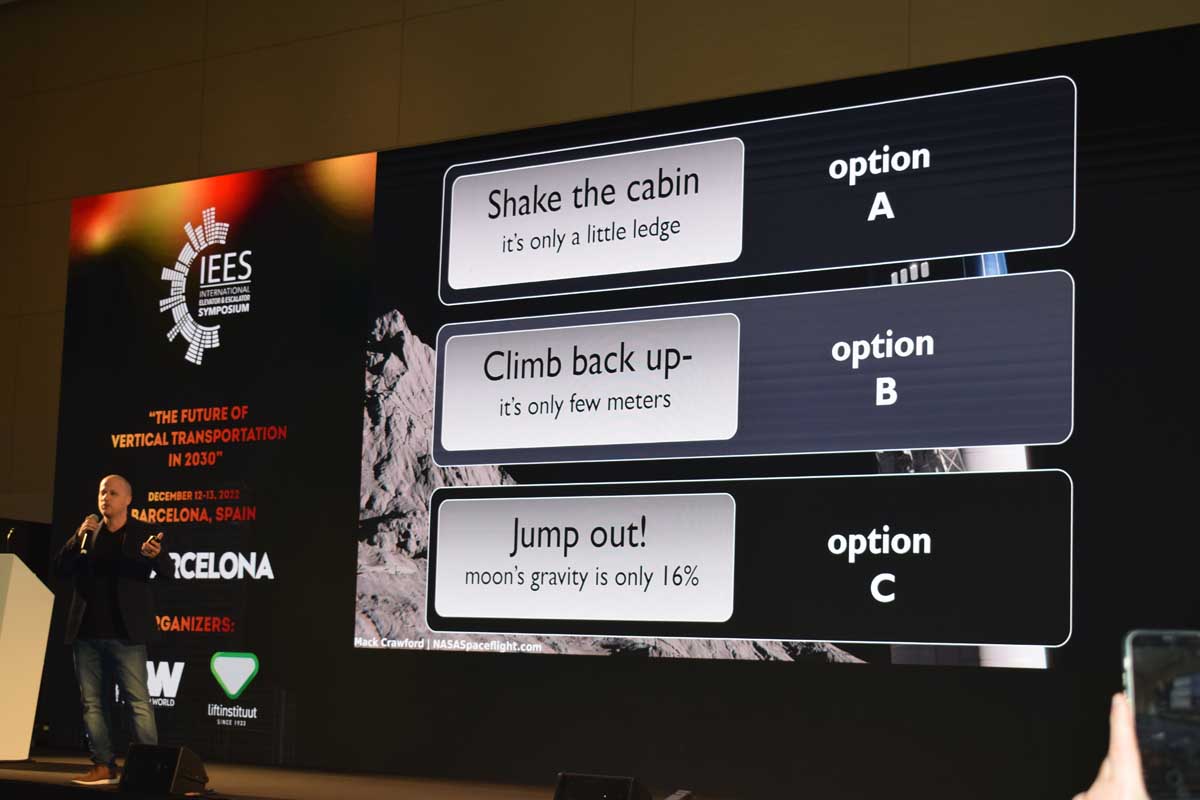
“That’s a hard act to follow, but I will bring you back down to earth,” Liftinstituut Product Certification Specialist Elena Mauro said when she took the stage. With the same title as IEES 2022, Mauro spoke about how big industries are evolving (automotive, which has seen everything from “Lambo doors” to electric vehicles, and finance, where Bitcoin disrupted the traditional “physical token for goods or services” system.) “Could an implanted chip to receive goods or services be on the horizon?,” she asked.
Elevators are entering a brave new world, as well, Mauro said. The Lift Directive has undergone several key changes that will only gain momentum in years to come, she observed. For example, PESS, or programmable electronic safety system, is included in the 2005 standards. The SIL, or safety integrity level, framework, is evolving. The “20-20-20 rule” regarding producing and safeguarding an elevator is changing. The rule states that the following approximate lead times apply: 20 weeks — analysis, concept and requirements; 20 months — engineering design and implementation; and 20 years — operation and maintenance. Timely and efficient maintenance is key to achieving the desired 20-year elevator lifespan, and technology will be key, Mauro said. “There will be an increase in IoT and PESSRAL (Programmable Electronic Systems in Safety Related Applications for Lifts),” she observed. “Data is the currency of the new millennium.”
Dr. Pilar Molina Gaudo then shared how P2S (power-to-solar) is helping bridge the technology gap at the University of Zaragoza in Spain. A rooftop solar panel system at the university generates enough power to not only reduce elevators’ energy consumption, but, perhaps more importantly, power an information-gathering system developed at the university that shows elevator status and estimates the operational status of batteries. She said:
“All information is gathered and can be monitored. We can see how elevators consume energy. At the university, we have a good dependance on solar. Even on a cloudy day, the grid is powerful enough to deliver real-time information.”
After a coffee break and reopening of exhibits, Data Scientist Anton Glad of Finland’s KONE presented “Reducing Energy Consumption by an Optimization Algorithm in Elevator Group Control.” Given the energy crisis in Europe, Glad said, advanced destination-dispatch systems are more critical than ever. Allocating passengers to the same elevator car will increase wait times but improve efficiency, so everyone will have to pitch in to address the energy issue, he said.
The elevator industry will need to adapt to changing paradigms, but we will be up to the task.
— Lucien Wedzikowski, senior director, High-Rise Elevators, Otis France
With long, black hair and a bright blue, yellow and white dress shirt, the next presenter, Ren Yee, head of futures at Netherlands-based architecture firm UNStudio, described himself as “the wild card.” Making an argument in favor of high-density living (and working), Yee illustrated the belief that, “the higher the density, the lower the carbon,” by comparing Atlanta (in the U.S.) to Barcelona. Atlanta, with its numerous far-flung suburbs, has a much larger carbon footprint than the relatively compact Barcelona. Still, he said, much thought must go into making high-density environments livable. Some places, such as Singapore, have done it very well.
Yee brought up the concept of New Urbanism, “a planning and development approach based on the principles of how cities and towns had been built for the last several centuries: walkable blocks and streets, housing and shopping in close proximity, and accessible public spaces.”[5] He said:
“Living in cities is very complex. Cultural and community functions should be supported. In Singapore, there are seven connected towers where people have leisure activities, life/ death celebrations, marriages — you need space to do that. Technological development is going to be key to designing vertical communities. Healthcare, both formal and preventive, needs to be a part of it.
“We also need to take different cultural norms into account. Where I’m from [Malaysia], the first-born son is expected to take care of his aging parents, for instance. People also want to age in place, so towers need to have community centers for the older generation. Energy, mobility, food — all these need to be taken into account.”
Ayyildiz then introduced TAK Mathews of India’s TAK Consulting, for “Elevator Maintenance — the Past, Present and Future.” Designers of buildings must first ensure that a building is served by the appropriate number of elevators, Mathews said. Then, he said, since elevators’ lifecycles are shrinking, proper maintenance is vital. Referring to a Koshak paper that said he (Koshak) has seen mechanics with 300 units on a single route and only a little more than 30 min. to assess each unit, Mathews said the maintenance situation is deteriorating. Further, he said, the skilled workforce is dwindling, with too few young people entering the trade. Remote maintenance, he said, is to augment and support — not replace — in-person maintenance. Mathews stated:
“IoT and need-based seems to be the future for maintenance. The industry is becoming deskilled, with many having no clue. Elevator safety should be just as important as aircraft safety. We need a reality check and very clear assurance that, indeed, ‘all is safe!'”
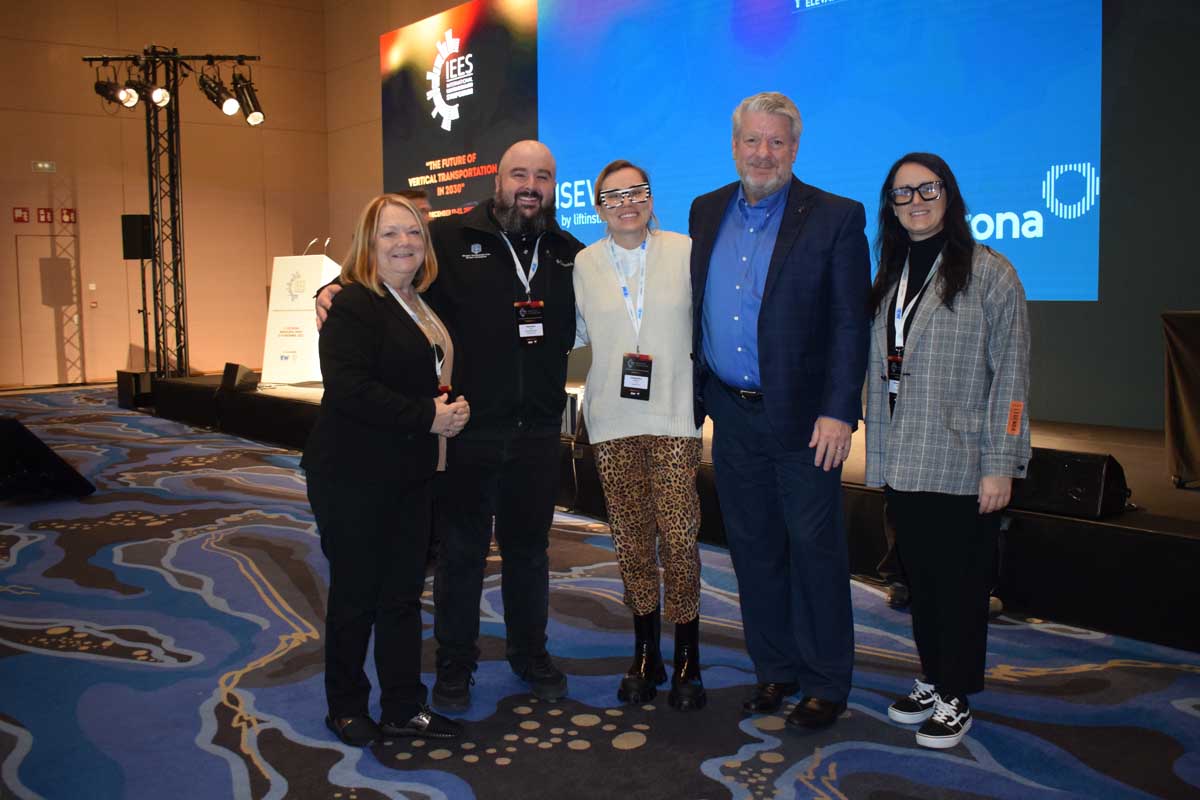
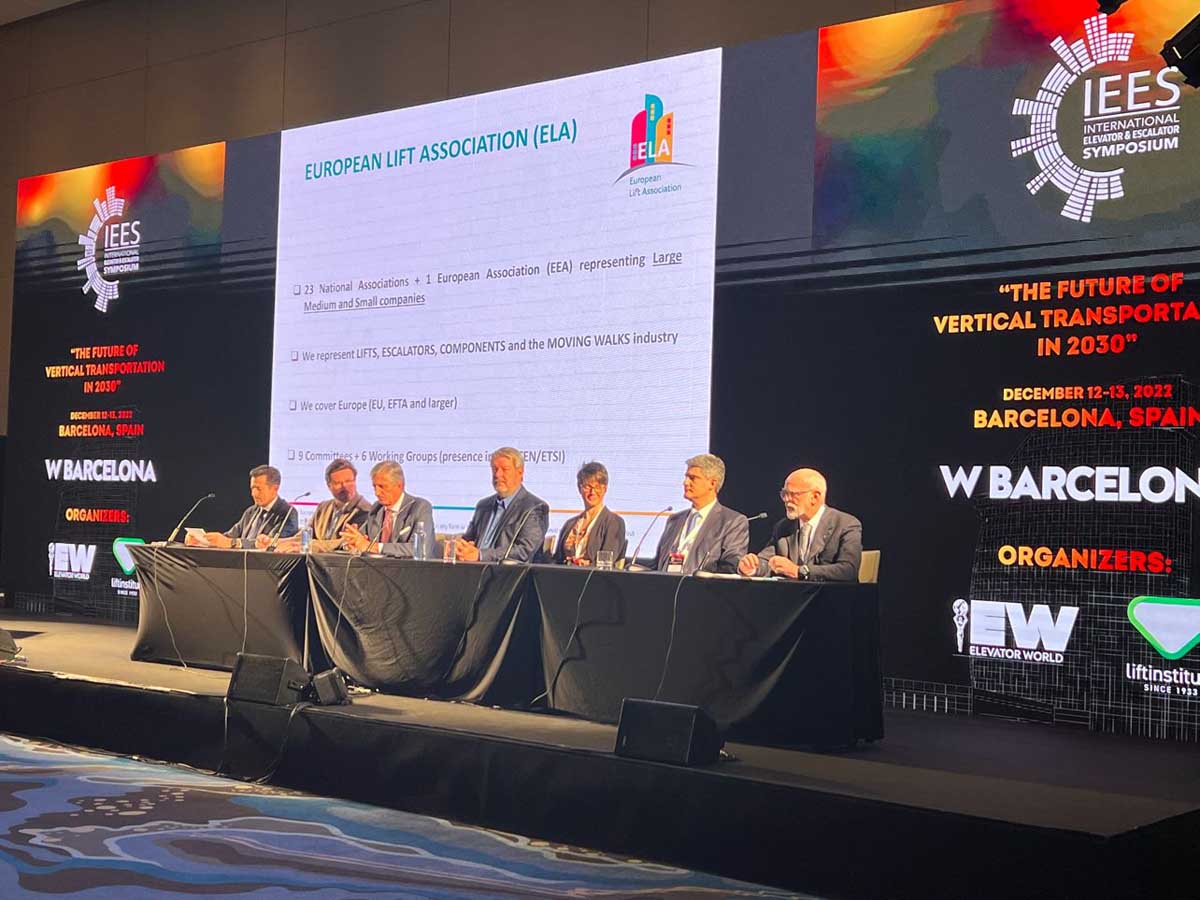



Welcome Dinner
After a break of a few hours, guests descended down several flights of stairs to the W’s Salt restaurant as a chilly rain fell gently outside. All was warm within in the cozy-yet-cavernous space strung with Edison lights. A solo guitarist set the mood with classical Catalan music. Servers greeted attendees with glasses of champagne to toast the evening, the event and EW’s 70th anniversary. Groups of two to six mingled, with conversations a mix of industry and small talk. Guests enjoyed a feast that included swordfish, lambchops, fresh raspberry cheesecake “shots” and much, much more.
Day 2 (December 13)
As attendees filtered into the ballroom, a retrospective of EW, now in its third generation and celebrating its platinum anniversary this year, played on the big screen, along with an ad for the popular Nanolift. “Yesterday was full of knowledge, and today continues that,” Ayylidiz said prior to introducing the day’s first presenter, Emre Köroğlu, deputy general manager of Merih Asansor A.S. of Türkiye, with “Polymer Matrix Composite (PMC) Applications on the Elevators of the Future.” Seeing colorful illustrations on the big screen and hearing the author explain PMC technology added depth to a paper your author had edited previously.
PMC, Köroğlu explained, is lightweight with superior mechanical qualities, leading to its prevalent use in small aircraft, Formula One racing cars and sports equipment such as tennis racquets and skis. In elevator construction, use of PMC is generally limited to one-off, custom units for yachts, but the material is a key component in several new VT innovations: KONE UltraRope and TK Elevator’s MULTI ropeless system, for example.
Standard use of PMC for elevator cabins and frames will happen eventually, Köroğlu said. “The main challenge is the knowhow — getting the right recipe,” he said, continuing:
“Why use PMC? Why not? It’s lightweight, durable, flexible and an effective alternative to steel. Fifty percent of a Boeing 787 is PMC. Is making elevators from PMC futuristic or realistic? I believe it’s realistic, with some modification. R&D will drive product evolution. We need to make the next generation of elevators as lightweight as possible, and for that, PMC is not an option; it’s a must.”
After a coffee break, Otis France’s Wedzikowski again took the stage, this time with “Next Gen Dispatching at Otis” in high-rise buildings. The evolution of next-gen dispatching will involve AI, Wedzikowski asserted. He then introduced one of Otis’ newest innovations, OptiSenseTM, which uses data reviewed on a weekly basis and AI to provide an advanced video analytics feature for elevators. “It acts as a set of eyes, automatically detecting people in critical areas and sending more cars to lobbies where they’re needed,” according to Otis. Wedzikowski said the technology has been tested successfully in many high-rise hotels. Otis has also optimized data-gathering, predictive systems with success at the 68-story, 1,015-ft-tall Fortune Center in Guangzhou, China, and the 58-story, 981-ft-tall 50 Hudson Yards in NYC. “AI dispatching can test up to 300 billion combinations,” he observed. “We’ve seen dramatic differences, including an up to 20% reduction in average wait time.”
After a coffee break, the next two presenters covered topics very familiar to EW readers: The concept of “elevator rescue” and the issue of proprietary equipment and information.
KONE Chief Design Engineer Hilkka Hämäläinen presented “Analytical Method for Defining Requirements in Elevator Rescue.” She looked at the weaknesses of EN81-20 in terms of elevator rescue, summarizing, “There is room for a more holistic view. There should be a way to exit the elevator car into the shaft.”
“Data is the currency of the new millennium.”
— Elena Mauro, product certification specialist, Liftinstituut
Rick Sayah of U.S.-based consultancy VDA presented, “The Right to Repair (the Argument for Common Technology Standards for VT),” a subject with which he is very familiar. Manufacturers should give customers the right tools and information to repair their VT systems, which are more complex than equipment of yesteryear and require a higher level of technical knowledge to repair.

The last presentation before lunch was by Eduard Amigó, global sales manager for Spain-based Fermator, with “Challenges of Elevator Modernization.” Fermator is among companies with the ability to customize elevators (with specific dimensions and quiet operation) for markets such as China. Amigó observed there are 7.2 million elevators installed in China, and a government push is underway to bring elevators to mid-rise buildings for the aging population. Europe, he says, presents similar opportunities, and urged attendees to visit the Fermator booth to learn more. Amigó said:
“Solutions we provide offer 150-mm headroom and SLIM doors that minimize wasting space. There are probably more than 20 countries we could help. We need to think globally and act locally. Are we ready for the challenges? I think we are.”
After a break for lunch and the exhibition, Oosting announced that the final three presentations were by two women and one man — two about safety and one about sustainability. Oosting also thanked Ayyildiz for helping emcee the event.
Next up was Manfred Stein, product manager at CEDES AG of Switzerland, with “Increased Safety for Elevator Doors.” Stein provided an interesting history and a look into the future of elevator door safety technology, which has evolved from bumpers to multiple beams and light curtains. Despite advances, accidents involving elevator doors continue, he observed, noting the book National Electronic Injury Surveillance System reported that nearly 4,000 mishaps involving a person or object (like a walker) hitting elevator doors occur each year in the U.S. 2D door monitoring has given way to 3D monitoring, he said. Arguments against this technology point out it cannot distinguish between a person or an object entering an elevator. 3D is also sensitive to vibration. A solution, he said, is Time of Flight, ToF, technology such as CEDES’ CabSafeTM system that consists of a controller, a 2D light curtain and a 3D ToF sensor. With fully recessed mounting, CabSafe fulfills all relevant code requirements and more, Stein said.
To begin her presentation on “Elevators and the Environment,” Alea Guillemi of Argentina-based Guillemi Group showed an awesome video of the Earth from space. Guillemi made an argument for replacing hydraulic elevator technology with MRL belt technology to reduce VT’s carbon footprint.
Echoing Gemenek’s Gecegezer in stating that some disabilities, such as being on the autism spectrum, are hard to immediately discern, Dr. Magdalena Krstanoski of Everglades University in Florida urged for greater inclusiveness in elevator design in “Vertical Transportation Safety Awareness, Inclusiveness and Design Approach in Matter in the Global Frame.” Certain colors, textures and brightness levels may be disturbing to some passengers, she said. “No two cases are alike,” she said. The VT industry, she said, should embrace adaptable design and take a holistic approach.
“Technological development is going to be key to designing vertical communities.”
— Ren Yee, head of futures, UNStudio
Moderated by Liftinstituut MD John Van Vliet, the panel discussion featured European Lift Association Director Roberto Zappa, EFESME President Massimo Bezzi, Hamalainen, Gecegezer, Spain’s AECAE (Association of lift components manufacturers) VP Barroso Garcia Leyaristy and Koshak. Prompted by audience questions, discussions included linear motor and belt development, achieving worldwide VT codes and standards, the challenges of remote monitoring, software development and cybersecurity, which many agreed should be a topic at this year’s event in Scotland.
Prior to the panel discussion to end IEES 2022, Oosting and MacKinnon drew names for the two lucky winners of tickets to IEES 2023 in Edinburgh: Michael Munoz of VDA and Robert Kaspersma of KONE. Also in the spirit of giving and a callback to Waagmeester’s description of the origin of the word “symposium,” MacKinnon and Yılmaz gifted Sicor CEO Massimo Santambrogio a bottle of Scotch whisky to thank him for Sicor being the first to sign up to exhibit at IEES Edinburgh, which will have the theme, “Sustainability and Digitalization.”
References
[1] Ancient Greek Symposia, The J. Paul Getty Museum at the Getty Center, student handout
[2] Gleeson, Scott, ” Billionaire Marc Lore Outlines How He Will Build the Inclusive, Utopian Desert City Telosa,” USA Today, October 17, 2021.
[3] zzipco.com/products/elevator-door-gib
Get more of Elevator World. Sign up for our free e-newsletter.





